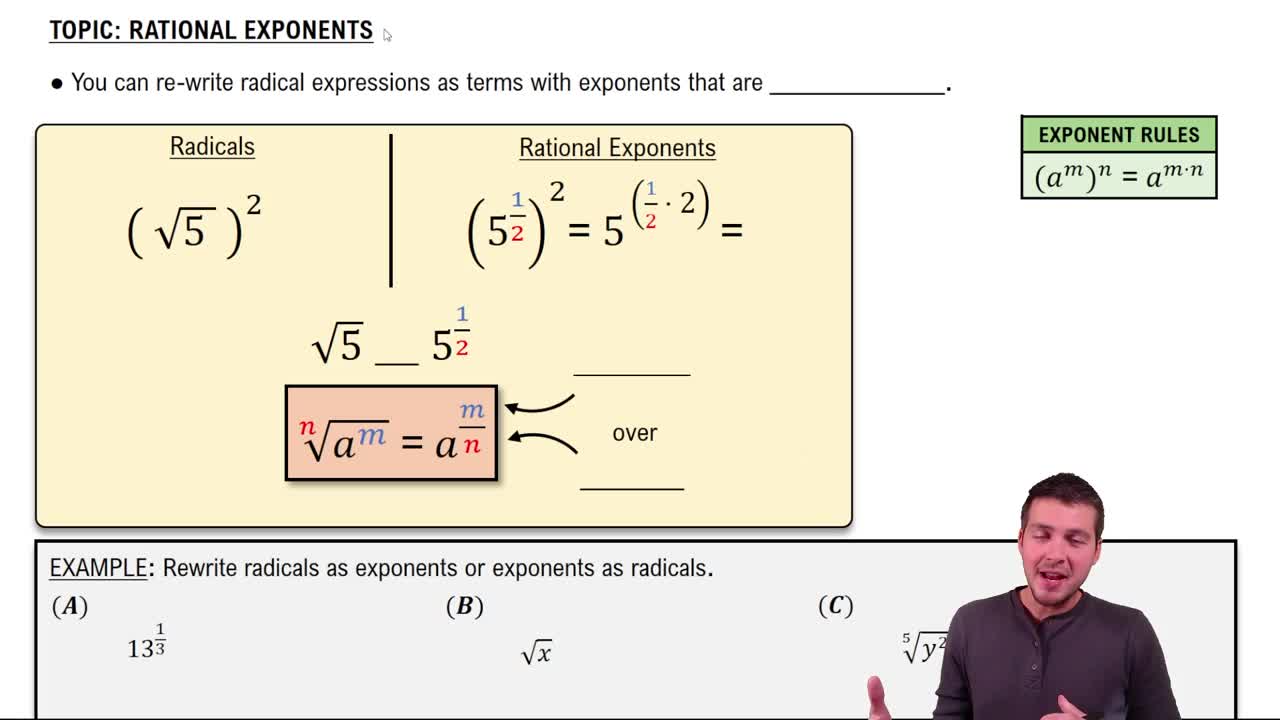Here are the essential concepts you must grasp in order to answer the question correctly.
Square Root
The square root of a number is a value that, when multiplied by itself, gives the original number. For example, the square root of 169 is 13, since 13 x 13 = 169. In mathematical notation, the square root is represented by the radical symbol (√). Understanding square roots is essential for evaluating expressions involving exponents, particularly those in the form of x^(1/2).
Recommended video:
Imaginary Roots with the Square Root Property
Exponents
Exponents are a way to express repeated multiplication of a number by itself. The expression a^n means 'a multiplied by itself n times.' When the exponent is a fraction, such as 1/2, it indicates a root; specifically, a^(1/2) is equivalent to the square root of a. This concept is fundamental in algebra for simplifying and evaluating expressions.
Recommended video:
Order of Operations
The order of operations is a set of rules that dictates the sequence in which mathematical operations should be performed to ensure consistent results. The common acronym PEMDAS (Parentheses, Exponents, Multiplication and Division, Addition and Subtraction) helps remember this order. When evaluating expressions like 169^(1/2), it is crucial to apply these rules correctly to arrive at the right answer.
Recommended video:
Performing Row Operations on Matrices
 Verified step by step guidance
Verified step by step guidance Verified Solution
Verified Solution

